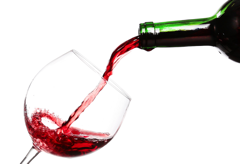Uncorked
Uncorked, published in The East Hampton Star
In case you haven't noticed there are still some affordable French wines. And I don't mean affordable for just hedge fund managers. I'm talking about good quality, everyday wines you can buy for less than $15.
Many of these wines come from one area: Languedoc-Roussillon. The boundaries extend from the Rhone river valley in the east to the Spanish border in the west, running in an arc along the Mediterranean coast. The largest wine region in the world, it produces about two billion bottles a year, 70 percent of that through co-ops.
Until the 1970s the area produced oceans of cheap, harsh wine. In a big effort to reinvent themselves the wine producers radically upgraded their quality by replacing inferior grape varieties with more esteemed and more costly ones, by focusing on the best vineyard sites, and by using better winemaking techniques such as aging in oak barrels.
The mediocre wines of the past have been totally displaced. The region now competes with prestige wine producing areas all over the world, and has been able to beat many other French appellations on pricing. Some Languedoc-Roussillon wines are quite expensive. The quality is there, and I usually find them worth the money. But it is the everyday wines that surprise and delight without putting a dent in your wallet.
I was in the Languedoc a few weeks ago to celebrate the birthday of a Dutch friend who has her summer house in a village in the mountains north of Montpellier, a beautiful city close to the Mediterranean coast. Our group of friends spent a lot of time eating and drinking, so it was a perfect opportunity for me to pay attention to local wines.
I have to admit that in a situation like that everything tastes good. There is still a wonderful quality of life in southern rural France with delectable regional fruits and vegetables, cheese, honey, olives, fragrant herbs, and wine. I stayed at Laroque, the farm of a friend who is a cheesemaker. His small herd of goats is out grazing at this time of year, and he milks them by hand each morning, at least when he catches up to them, and then makes his delicious unpasteurized chevre.
His small cheesemaking facility is immaculately clean but he cannot meet all the European Union requirements and is gradually going out of business. Even now he can sell only in the outdoor market of a nearby town and to a few restaurants. I've visited this area for years, and I realized that even though it looks the same, the economic base has shifted. My friend and his wife have converted the farm into a bed-and-breakfast for ecotourism. (If you are interested in staying at the farm, his Web site is www.laroque.free.fr)
My farmer friend was also my wine guide, and I particularly wanted to drink the wines he served at home on a daily basis. Indeed, my favorite wine was a local red that for economy he bought in a three-liter box. The associations and surroundings, I realize, counted as much as the taste.
Rather than try to remember the many labels now imported from Languedoc-Roussillon, it makes more sense to learn about the designated appellations comprising this area, and experiment with different producers. A few of the more prominent wine designations to watch for are Coteau du Languedoc, Corbieres and Minervois, Cotes de Roussillon, and Saint Chinian.
The most prevalent red grape varieties are syrah, grenache, carignan, mourvedre, cabernet sauvignon, and merlot. Chardonnay is the most common white grape, but sauvignon blanc is now appearing, and a number of local white grape varieties are still used.
Sherry Lehmann, the Madison Avenue wine store, lists over 40 wines from Languedoc-Roussillon on its Web site. Prices range from $6 a bottle for Fortant, a very nice merlot, to $115 for a 1999 La Porte du Ciel, a sumptuous blend. I've been buying Domaine Montlobre since Sherry Lehmann starting selling it about five or six years ago. An elegant Old World-style merlot, comparable to an expensive Pomerol, it delivers a lot of value for only $15 per bottle. I also recommend La Colonie, a bright, sophisticated sauvignon blanc. Hurry if you want it. Quantities are limited and it always sells out. Sherry Lehmann is taking orders now for the 2004 vintage (sold only by the case for $144) for delivery the first week of August.





